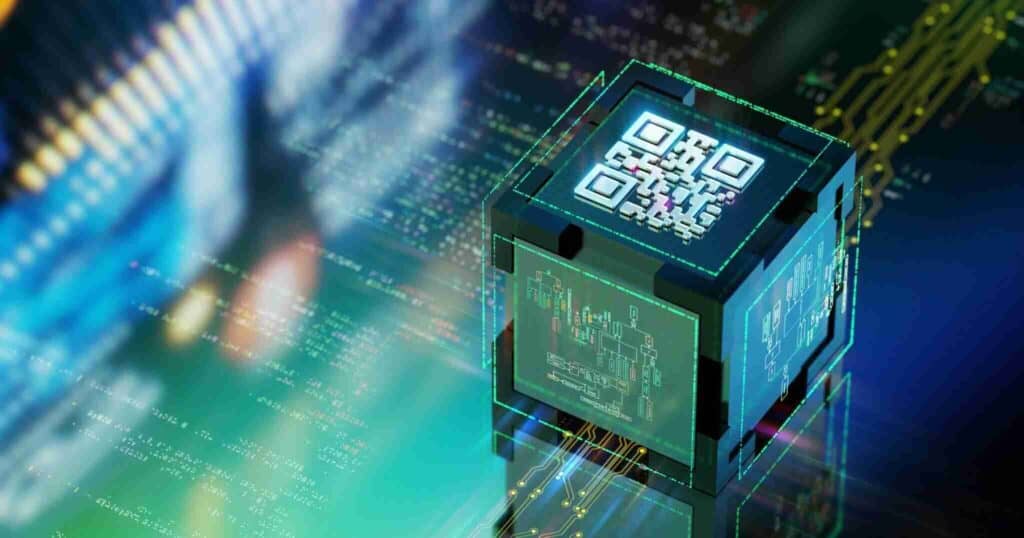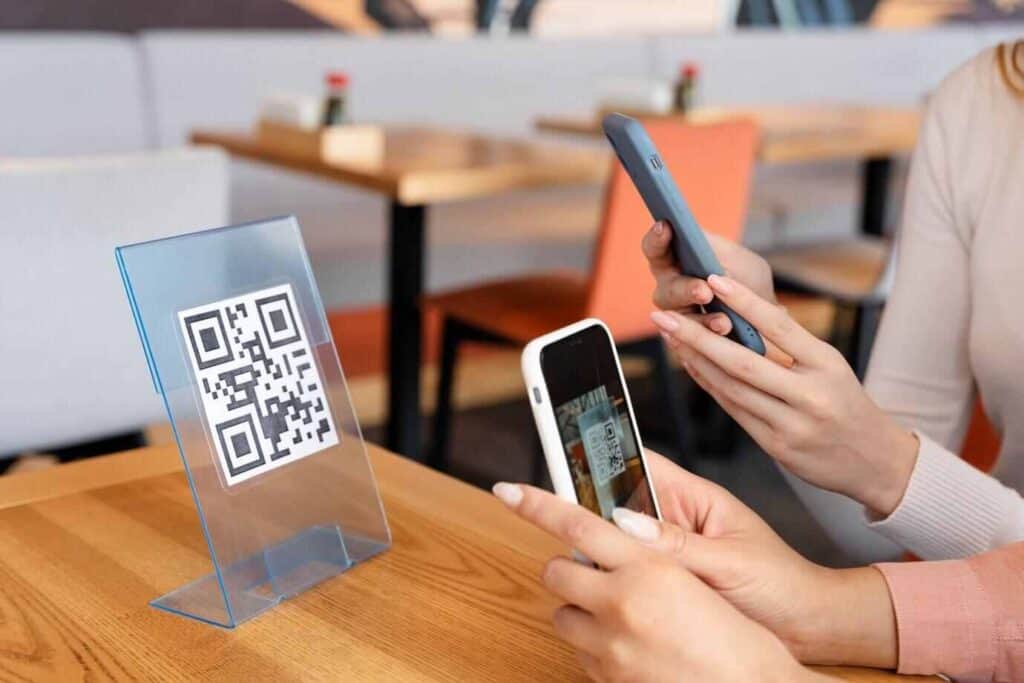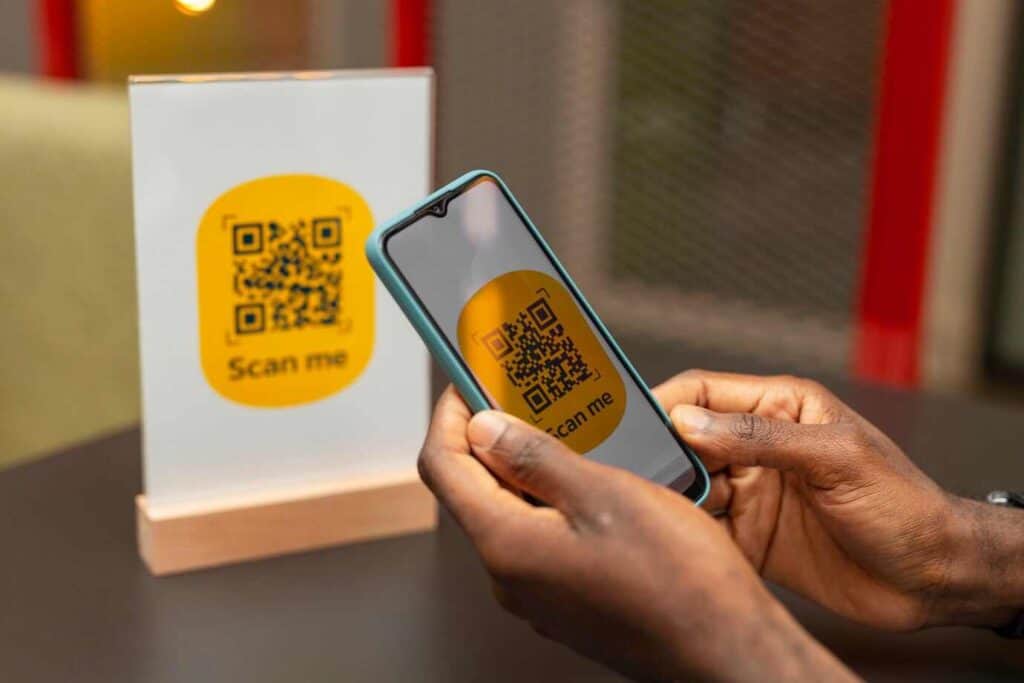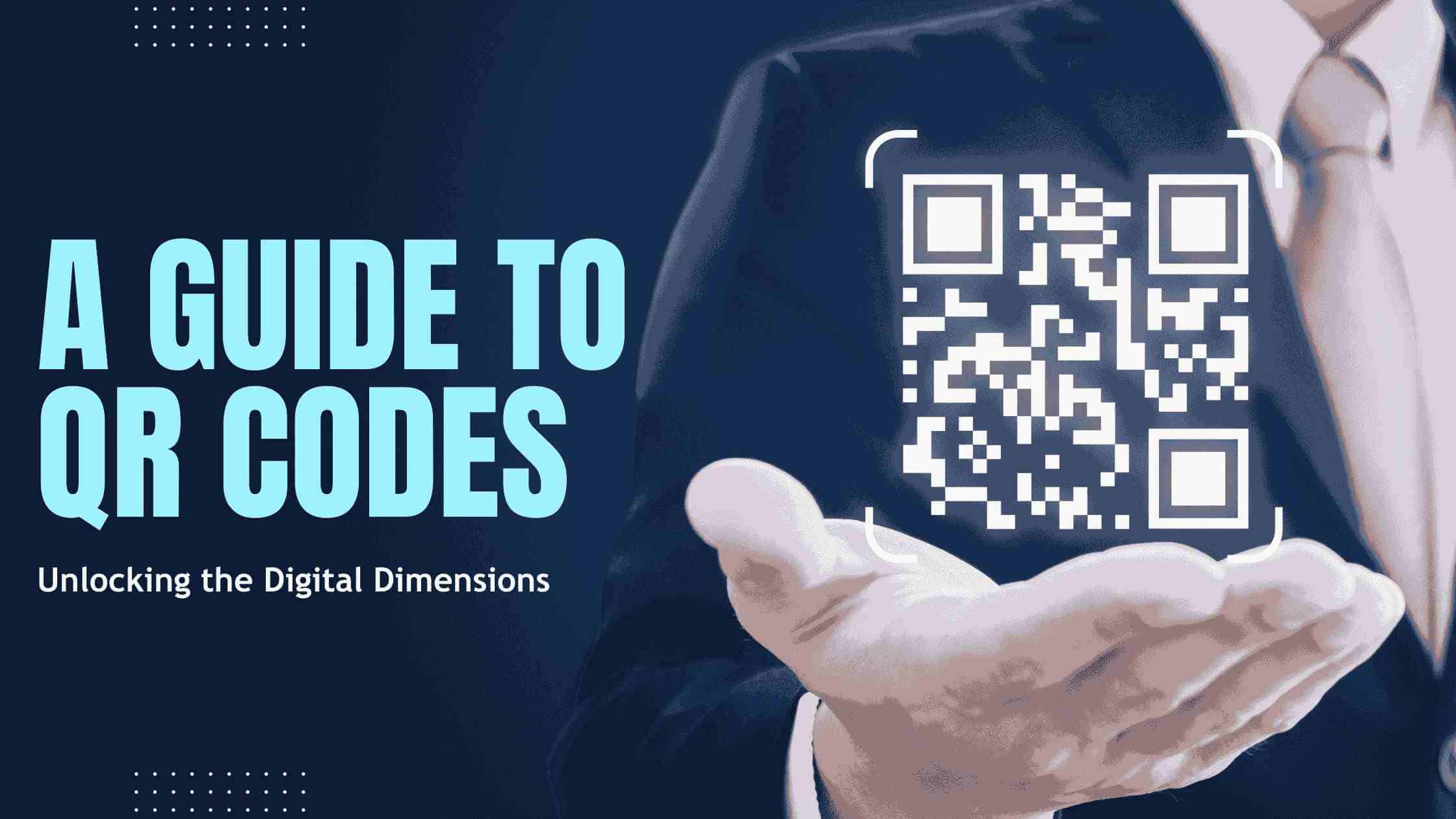Introduction
Remember the clunky barcodes on your childhood cereal boxes? Well, move over, pixelated dinosaurs, because a new breed of code has taken the world by storm.
Forget squinting at blurry stripes – enter the QR code: a futuristic mosaic of black and white squares packing a universe of information within its seemingly simple grid.
Before we dive into this digital rabbit hole, let’s rewind a bit.
A. Definition and Origin of QR Codes
QR stands for Quick Response, and these “microdots of magic” were born in Japan in the 1990s. Imagine needing to track car parts efficiently in a bustling factory.
That’s the challenge that birthed QR codes, designed for lightning-fast scanning and data storage. Little did they know, they’d soon be adorning billboards, restaurant menus, and even your grandmother’s yoga mat.
B. Importance and Ubiquity in Modern Society
Fast forward to today, and QR codes are everywhere. They’ve become the invisible handshake between the physical and digital worlds, blurring the lines between offline experiences and online convenience.
QR Codes are the gateway to hidden menus, instant website access, and seamless digital payments. They’re the bridge between your paper business card and a potential client’s contact list. They’re like tiny treasure maps, waiting to be unlocked with a quick scan.
C. Purpose of the Guide
Now, before you get bamboozled by all this coding mumbo jumbo, fear not! This guide is your trusty decoder ring, unraveling the mystery of QR codes. We’ll explore their inner workings, demystify their different types, and equip you with the know-how to create and use them like a seasoned pro.
So, grab your phone, channel your inner Indiana Jones, and let’s embark on this QR code adventure!
Understanding QR Codes

A. What are QR Codes?
At their core, QR codes are encoded information presented in a matrix pattern. Unlike traditional barcodes, QR codes can store a variety of data types, from website URLs to phone numbers, text messages, and even entire files. It’s like a microscopic puzzle, each square holding a piece of the data pie.
B. How do QR Codes Work?
When you point your smartphone’s camera at a QR code, a built-in app (or a downloaded one) kicks into action.
This app analyzes the pattern of squares, deciphers the encoded data, and voila! You’re whisked away to a website, added a contact to your phone, or presented with whatever secret the code held.
It’s all thanks to clever algorithms that translate the black-and-white squares into meaningful information.
Types of QR Codes
Let’s explore the major types of QR codes:

Not all QR codes are created equal. They come in two main flavors:
A. Static QR Codes
These are the workhorses of the QR world. Once encoded, the information they hold remains fixed, like a digital snapshot.
Think restaurant menus, business cards, or product packaging. They’re perfect for situations where the data doesn’t need to change.
B. Dynamic QR Codes
These are the chameleons of the QR kingdom. Their encoded information can be updated on the fly, even after they’ve been printed or displayed.
Imagine a billboard promoting a sale that adjusts the discount code each day. That’s the power of dynamic QR codes!
How to Make a QR Code?

Creating your own QR code is easier than baking a cake (and probably less messy!). Here are your options:
QR Code Generators
A. Online Generators
Online platforms offer user-friendly interfaces for generating QR codes. Simply input the desired information, customize the appearance, and voila! Download your freshly minted code.
Try ShortifyMe to create QR Codes
B. Offline Software
For more control and customization, various software options provide robust QR code generation capabilities. Explore the features and choose the tool that best aligns with your preferences.
Customizing a QR Code
Want to make your QR code stand out from the crowd? Go wild with customization!
- Adding Logos and Images: Embed your brand logo or a cool image within the code for instant brand recognition.
- Choosing Colors: Ditch the standard black and white. Experiment with different colors to match your branding or the overall design aesthetic.
- Incorporating Branding Elements: Use your brand fonts, colors, and even taglines to create a truly unique and on-brand QR code experience.
How to Use a QR Code?

With your personalized QR code freshly minted, now comes the fun part: unleashing its power.
A. Common Uses of QR Codes
Here are some of the most common ways to put your tiny squares to work:
1. Website URLs
Transform traditional marketing materials into interactive gateways by embedding website URLs in QR codes.
Zap your audience straight to your website, landing page, or online portfolio with a single scan.
2. Contact Information
Simplify networking by sharing contact details seamlessly through QR codes. Embed your contact details (phone number, email address, social media links) in a QR code.
A quick scan and bam! They’ve got your info saved, and ready to connect.
3. Business Cards
Upgrade your business cards by incorporating QR codes, offering a direct link to your digital presence.
It’s a two-for-one deal: a physical card and a digital gateway, all in one.
4. Event Tickets
Streamline event management with QR-coded tickets, enhancing efficiency and security. can attendees in with ease, track ticket sales, and even offer exclusive content or information via the scanned code.
It’s a win-win for event organizers and guests alike.
5. Menu Access
Forget sticky, germ-infested menus. Restaurants can embed QR codes on tables or coasters, leading diners to interactive online menus complete with pictures, descriptions, and even dietary filters.
No more waiting for physical menus or squinting at faded print – it’s all just a scan away.
B. Industry Applications
QR codes aren’t just for fun and games. They’re revolutionizing industries across the board:
1. QR Codes in Marketing
- Advertising and Promotions
Embed special offers, coupon codes, or product information in QR codes on posters, magazine ads, or even billboards. Capture leads, track campaign performance, and create interactive experiences – all thanks to a tiny scan. - Product Packaging
Turn your product packaging into a treasure trove of information. Link to product demos, recipes, customer reviews, or even loyalty programs, all accessible via a quick scan. It’s a way to extend the customer experience beyond the physical product. - Business Cards and Brochures
Ditch the static paper and infuse your marketing materials with interactivity. Add QR codes linking to your website, contact information, or social media pages. You’ve just turned a one-way communication into a dynamic engagement opportunity.
2. QR Codes in Retail and E-Commerce
- Mobile Payments
Make checkout a breeze with QR-based mobile payment systems. Customers simply scan a code and pay securely with their phones, skipping the cash register lines and enjoying a seamless shopping experience. - Product Information and Reviews
Take product descriptions to the next level. Link QR codes to detailed product information pages, interactive demos, or customer review sections. It’s a way to empower informed purchases and build trust with your customers.
3. QR Codes in Education
- Classroom Applications
Engage students with interactive learning materials. Embed QR codes in textbooks, worksheets, or classroom walls, linking to audio files, videos, online quizzes, or augmented reality experiences. It’s a way to turn passive learning into active exploration. - Interactive Learning Materials
Turn any physical object into a learning tool. Embed QR codes on museum exhibits, historical landmarks, or even science project models. Students can scan the codes to access supplementary information, videos, or interactive quizzes, transforming static objects into gateways to knowledge.
4. QR Codes in Healthcare
- Patient Information
Streamline patient care with QR codes on wristbands or medical charts. Link to electronic medical records, medication information, or allergy alerts, accessible to healthcare professionals with a quick scan. It improves efficiency, accuracy, and patient safety. - Prescription Labels
Enhance medication tracking and adherence with QR codes on prescription labels. Patients can scan the code to access dosing instructions, side effect information, or refill reminders, promoting better medication management.
How to Scan a QR Code?

Understanding the scanning process is crucial for both consumers and businesses.
A. Scanning Devices
While smartphones reign supreme in the QR code scanning world, you’re not limited to them. Here’s a rundown of other scanning devices:
- Tablets: Like smartphones, most modern tablets have built-in cameras and QR code scanning capabilities. Just launch the camera app and scan away!
- Dedicated Scanners: For industrial or high-volume scanning needs, dedicated QR code scanners offer enhanced speed and accuracy. These scanners can quickly process multiple codes in close proximity and are often ruggedized for durability.
- Webcam-based Scanners: If you’re on a computer without a built-in camera, online QR code scanning tools can come to the rescue. Simply upload an image of the QR code, and the website will decode it for you.
B. Camera Capture and Data Extraction
Learn how the camera captures the QR code and extracts the embedded data, making the process seamless and user-friendly. Here’s the behind-the-scenes breakdown:
- Image Capture: Your camera app captures an image of the QR code.
- Pattern Recognition: The app’s built-in algorithms analyze the pattern of black and white squares, identifying the specific modules and their arrangement.
- Data Decoding: Based on the recognized pattern, the app decodes the embedded information, whether it’s a website URL, contact details, or raw data.
- Action Triggering: Finally, the app takes action based on the decoded information. This could involve opening a website, adding a contact to your phone book, or displaying the encoded text.
Dispelling the Myth of Expiration
Do QR codes expire, or can they be used indefinitely for accessing information or initiating actions?
Remember, QR codes themselves don’t expire like bananas. As long as the code is intact and scannable, the information it holds will be accessible.
However, for dynamic QR codes, the linked content might change or become unavailable if the service behind it is discontinued.
So, while the code itself is immortal, always check the source or update the code if needed to ensure uninterrupted access to the information.
Best Practices
Now that you’re a QR code decoding wiz, let’s level up your game with some best practices:
A. Proper QR Code Placement
Choose a location with good lighting and minimal background clutter to ensure easy scanning. Avoid placing codes on reflective surfaces or near bright lights.
B. Design Considerations
Opt for clear and contrasting colors for the black and white modules. Consider the overall design aesthetic and ensure the code doesn’t clash with surrounding elements.
C. Regular Maintenance
For dynamic QR codes, keep the linked content up-to-date and test the code regularly to ensure it’s functioning properly.
Security Considerations
While QR codes offer convenience and interactivity, security should always be a top priority. Here are some things to keep in mind:
A. Beware of Phishing Scams
Don’t scan QR codes from untrusted sources or those appearing in suspicious contexts. They could lead to phishing websites designed to steal your personal information.
B. Verify Linked Websites
Before scanning a code, hover over the link (without clicking) to preview the destination URL. Look for suspicious domain names or URLs that don’t match the expected content.
C. Use Secure Scanning Apps
Opt for reliable QR code scanning apps with built-in security features, such as URL verification and malware detection.
Conclusion
From unlocking hidden menus to streamlining healthcare, QR codes have woven themselves into the fabric of our modern lives. By understanding how they work, how to use them effectively, and how to stay safe, you can harness the power of these tiny squares to unlock a world of possibilities.
Let QR codes be your digital compass, leading you to hidden treasures, enriching your experiences, and bridging the gap between the physical and digital worlds. Remember, the possibilities are endless – just like the tiny squares themselves.
You May Also Like:



